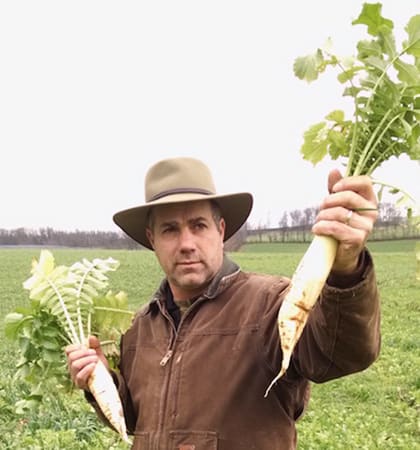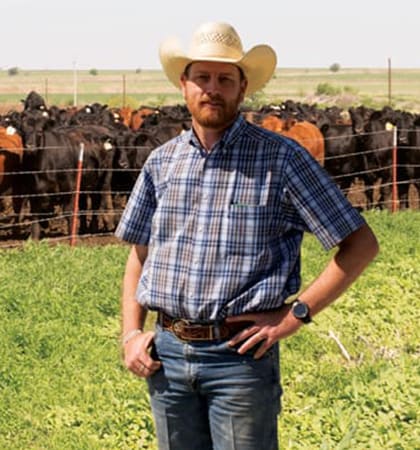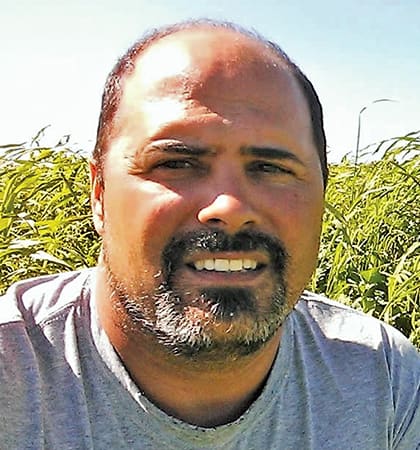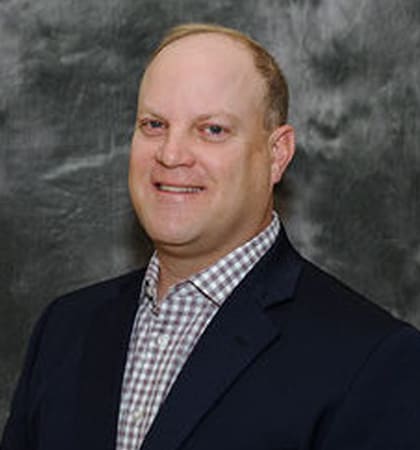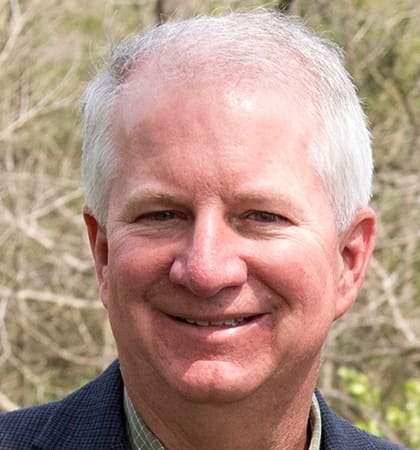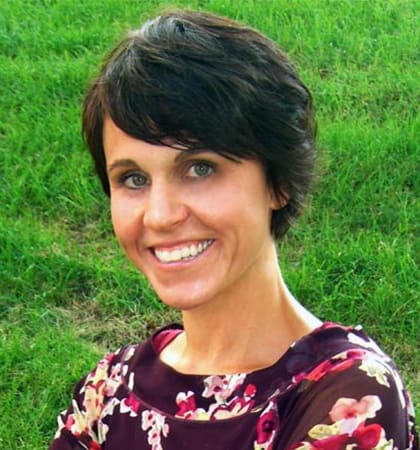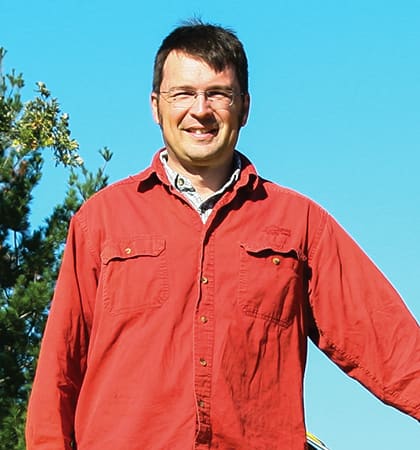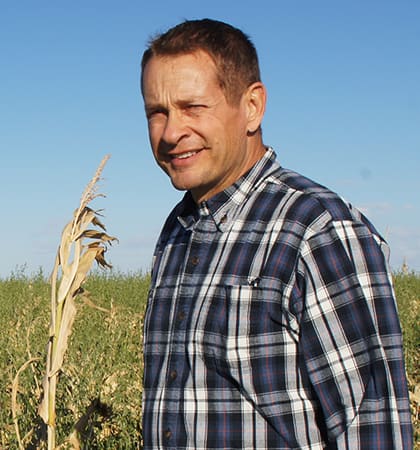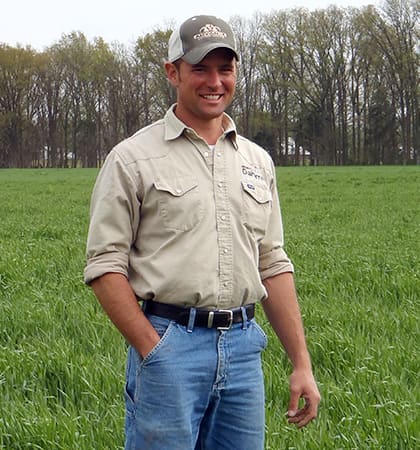THANKS FOR ATTENDING!
|
Thanks for joining us for the Fall 2020 National Cover Crop Summit! As a Summit VIP, you have access to each presentation below for the next 12 months. Bookmark this webpage to return to during the coming year to review and replay these presentations. Please take a few minutes to share your feedback on the Fall 2020 Summit by taking our attendee survey here.
FALL 2020 NATIONAL COVER CROP SUMMIT PRESENTATIONS |

SJOERD DUIKER
Professor of Soil Management, Penn State Univ.
"It's Not Too Late for Frost Seeding"
Although many growers may consider the “ideal” time to plant cover crops is immediately after harvest, having snow on the ground is not a reason to give up on utilizing the benefits cover crops can offer. This is where frost seeding comes into play as a cover crop seeding method.
Cover crop seeds are small and hardy, allowing Mother Nature to help establish seed to soil contact through the soil’s up and down movement as it freezes and thaws. There is no need for tillage when frost seeding is used.
Sjoerd Duiker, a professor of soil management and soil physics, will discuss the best cover crop species to use for frost seeding at the 2020 National Cover Crop Summit: Fall Edition. His presentation will also cover the preferred timing for frost seeding and how to effectively plant cover crop seeds when frost seeding for optimum results.

DAN FORGEY
Grower, Gettysburg, S.D.
"Improving Soil Health Through Diverse Crop Rotations Including Covers"
Crop rotations are a proven way to result in big positive results for soil health and improving biological activity and nutrient cycling. Cronin Farms, a no-till operation based near Gettysburg, S.D., has crop rotations down to a science, including forages and cover crops.
Dan Forgey serves as agronomy manager for Cronin Farms, which is owned by Monty and Mike Cronin. The farm transitioned to no-till in 1993 and established a rotational grazing system.
Forgey will discuss how the operation rotates through crops of corn, spring wheat, winter wheat, sunflowers, soybeans, flax, field peas and lentils. Forgey’s presentation will cover saving soil moisture through crop rotations, how crop residue provides nutrients for the next crop while protecting the ground, and how crop diversity helps control bugs and weeds.

ADAM KRAMER
Grower, Prairie du Chien, Wis.
"Aerial Seeding Can Be An Effective Cover Crop Seeding Method"
Harvest season is a busy time. There is so much for a grower to organize, manage and stay on top of that adding one more thing during the season — like seeding cover crops — just seems way too daunting. However, there are other seeding options for growers to consider that don’t require any additional physical labor on the grower’s part. Aerial seeding is one of those options.
Aerial seeding is an ideal choice for getting cover crops seeded when time is of the essence, or when ground conditions are less than ideal for equipment, such as when soil is wet. Aerial seeding still provides the same flexibility for planting cover crop mixes, as the method can be used for multiple cover crop species.
Adam Kramer, grower and Certified Crop Advisor from Prairie du Chien, Wis., will discuss how aerial application can be an economical choice. Kramer’s presentation will share his experiences working with growers who are aerial seeding and what growers should know to help make aerial seeding successful in their operations.

NICK GUETTERMAN
Grower, Miami County, Kan.
"Spice Up Corn & Soybeans with Cover Crops"
Corn and soybeans are the two most common crops grown in the U.S. Many growers who raise those crops might not know how to break the corn-and-soy cycle to include cover crops. One grower from Kansas shares tips on how it can be done.
Nick Guetterman farms with his father and 3 brothers in Miami County, Kan. Their 16,000-acre operation uses cover crops to increase their soil organic matter while growing corn and soybeans.
Guetterman will discuss how the operation has added cover crops such as winter peas, canola and rye to their corn and soybean rotation. Guetterman will also share how higher soil organic matter levels have resulted in higher yields, how double-cropping has helped with residue levels and improving soil health, and how the farm determines how much cover crops to seed between corn and soybean crops.

DAVID TRIMNER
Miltrim Farms, Athens, Wis.
"Cover Crops Work for Dairies, Too"
Dairy operations typically have one primary goal: make as much milk as possible, since that is the product they are paid for. Miltrim Farms, a dairy based in Athens, Wis., seeks to not just produce large quantities of milk, but also to be good environmental stewards of the land and water.
David Trimner, a 4th generation dairyman and General Manager of Miltrim Farms, will share how the largest automated dairy in Wisconsin has incorporated cover crops to enhance water quality. Miltrim Farms, established in 1988, milks 2,500 cows, grows crops on 4,800 acres and has 40 full-time employees. Trimner will discuss how Miltrim Farms uses covers to reduce erosion and water runoff, why the dairy uses minimal tillage practices, and how they interseed alfalfa into corn.

JOHN STIGGE
Grower and Lifestock Producer, Washington, Kan.
"Integrating Livestock with a Cover Crop System"
Adding livestock to a cover crop system is considered the last step in bringing cover crops full circle in an operation. One Kansas grower and livestock producer shares insights from 35-plus years of no-till, 23 years of cover cropping and using livestock to increase his soil’s health and productivity while significantly reducing input costs.
John Stigge, Washington, Kan., has a philosophy focused on soil health and raises carbon-negative beef on his 1,200 acre farm. Stigge and his family have mastered carbon sequestration, which results in accelerated growth of grasses and cover crops and increased soil organic matter.
2019 NATIONAL COVER CROP SUMMIT SESSION REPLAYS
STEVE GROFF
Cover Crop Consultant, Holtwood, Pa.
5 Mindsets that Successful Cover Croppers Have in Common
Making that final decision to adopt cover crops on a farm isn’t an easy one, but it’s a little easier for growers if they start with the right mindset at the beginning.
Pennsylvania no-tiller and internationally renowned cover crop coach Steve Groff will share why it’s important to see where the future of agriculture is moving and how a willingness to strategically try something new is essential to succeeding with covers.
BONUS SESSION FEATURING STEVE GROFF
Innovative Methods and Tips for Getting Cover Crops Planted in a Timely Manner
With planting delayed in many states this year, getting cover crops seeded this fall could be a challenge for many growers — with weather around harvest being another factor to consider. Some growers might even need to consider spring seeding or interseeding in 2020 to keep their cover crop program in force and protect soil health.
There are many methods for planting cover crops, but which one works best in a particular situation? Steve Groff will share some savvy approaches to planting cover crops at different times of the year, and important tips to remember when evaluating planting methods for different cover crop scenarios.
SHAWN TIFFANY
Rancher, Tiffany Cattle Co., Herington, Kan.
Improving Farm and Feedlot Soil Health with Cover Crops
Shawn Tiffany will outline how he and his brother, Shane, have evolved their custom cattle-finishing facility — which services more than 32,000 head at two sites — from strictly grazing native Flint Hills pastures to grazing and forage, and finally, adding cover crops for soil improvement.
Tiffany will share important figures on livestock gain and performance documented through cover crop grazing, as well as yield benefits to his rotation of corn, winter wheat, silage sorghum and soybean.
TOM COTTER
Farmer, Austin, Minn.
Integrating Timely Interseeding of Cover Crops for Soil Health and Grazing Benefits
For many no-tillers in the northern U.S. it’s easy to stick with the same corn/soybean rotation or just seed cereal rye and call it good — but Tom Cotter decided several years ago that’s not good enough.
The Austin, Minn., no-tiller will share how he’s interseeding covers into corn and beans and seeding multi-species mixes after harvest for winter grazing as he backgrounds calves and produces all-natural beef products for the retail market
PAUL DELAUNE
Soil Scientist, Texas A&M University Department of Soil and Crop Sciences
Examining Cover Crop Benefits in Continuous Wheat and Cotton Rotations in a Semi-Arid Environment
Many growers in drier environments on the Great Plains could benefit from cover crops but worry that adding covers to their rotation will take too much moisture away from their cash crops and potentially hurt yields.
Soil scientist Paul DeLaune will share the results of two multi-year studies Texas A&M University carried out on the effects of cover crops not only on yields in continuous cotton and wheat systems but also important metrics such as water infiltration and retention, and changes in soil properties and soil microbial activity.
ROB MYERS
Regional Director of Extension Programs, North-Central Region USDA Sustainable Agriculture Research and Education (SARE) Program
A 360-Degree Perspective on How Cover Crops Affect Farm Profitability
One of the biggest questions growers have about cover crops is how the benefits will pay off for their operation, and the answers often consist of partial budget analyses of seed costs and yield effects by universities that don’t go far enough, says Rob Myers.
The regional director of extension programs for the USDA’s Sustainable Agriculture Research and Education (SARE) program will share results of a new national cover crop economics assessment that will look at how cover crop seeding benefits the entire farm operation — from longer-term effects on crop yields over several years to their impact on fighting herbicide-resistant weeds and soil compaction, to revenue diversification via grazing programs
ERIN SILVA
University of Wisconsin Extension Specialist, Organic Agriculture
Rolling Cover Crops Successfully in No-Till Systems
One growing method of cover management in no-till systems is terminating overwintering cover crops using a roller/crimper before, during or shortly after planting. This can be an especially valuable tool for organic operations that must avoid using herbicides for this task, or for growers wanting another tool to fight weeds.
Erin Silva will describe the successful organic no-till production techniques that include rolling and crimping cereal rye at soybean planting, which keeps a living root in the soil longer and leaves a mat of plant residue on the soil surface to suppress weeds and build biomass and soil organic matter. She’ll also share tips for setting up and operating a roller-crimper system successfully in a conventional or organic no-till operation.
DAMON REABE
Cover Crop Applicator and Co-Owner of Dairyland Aviation
Succeeding with Aerially Seeded Cover Crops — Even in Spring!
Many no-tillers complain aerially seeded cover crops result in poor stands. But Damon Reabe has spent the last 7 years studying stand failures and says there are some strategies no-tillers can employ to dramatically increase the chances of getting better stands.
The aerial cover crop applicator and co-owner of Dairyland Aviation from Waupun, Wis., will explain the necessary steps to ensure a successful cover crop stand, including what seed species work best when broadcast, the best timing of application, how sunlight can affect success rates and what soils have the greatest success rate. He’ll also touch on some successful work he’s done seeding cereal rye in March into corn and soybean residue to offer an alternative timeline to get a cover crop established before planting.
CHRIS TEACHOUT
Farmer, Shenandoah, Iowa
Realizing the Potential of Alternative Row Spacings and Biomass-Building Cover Crops
Chris Teachout will outline his progression of cover crop seeding approaches on his 1,850-acre farm in southwestern Iowa — from broadcasting the seed early on to offset planting covers into corn at V3-V4. Then he’ll share yield and biomass data from his on-farm trials last year planting corn at higher populations in 60-inch rows vs. 30-inch rows and seeding cover crops in between the wider rows.
The fifth-generation farmer will also have data to share from planting early soybeans into cereal rye on his farm.
JOHN WALLACE
Weed Scientist, Penn State University
Plan Ahead: Will My Herbicide Program Prevent Successful Cover Crop Establishment?
Growers that plan to integrate cover crops into their rotation will need to determine if their herbicide programs have the potential to reduce cover crop establishment success. The potential for herbicide carryover injury depends on the properties of various herbicides, weather and soil conditions, and the timing of cover crop seeding, says John Wallace.
The weed scientist from Penn State University will discuss guidelines and principles on the conditions that increase the potential for herbicide carryover, highlight herbicide label considerations, and provide information on herbicide programs that enable fall-seeding cover crops and interseeding cover crops into standing corn, drawing on data from lead Extension weed scientists in various regions.
ADAM DAHMER
Farmer, Marion, Ill.
Turning ‘Educational Experiences’ into Successes with Cover Crops in Long-Term No-Till
Adam Dahmer doesn’t like to call setbacks he’s experienced with cover crops in the past as “failures” but as learning opportunities providing knowledge to move forward. Having the privilege of being raised on a farm that was 100% no-till before he was born, soil health has been the center of attention for Adam, as he’s worked with cover crops for 20 years.
Adam credits cover crops such as cereal rye for improving soil organic matter content and nitrogen retention on his farm, as well as weed and disease suppression, improved water infiltration and reduced crop stress during dry periods.
The Marion, Ill., grower will detail his current approach to cover crop management on his 1,300-acre farm and how it’s evolved over 20 years, and goals he’s set for the future with covers as he works to improve the profitability and sustainability of his no-till system. With the benefit of a longer-term perspective, Dahmer will also share some tips and advice for cover crop newcomers on how to get off to a successful start and get past early stumbling blocks.
THIS EDUCATIONAL EVENT IS MADE POSSIBLE WITH THE SUPPORT OF:

